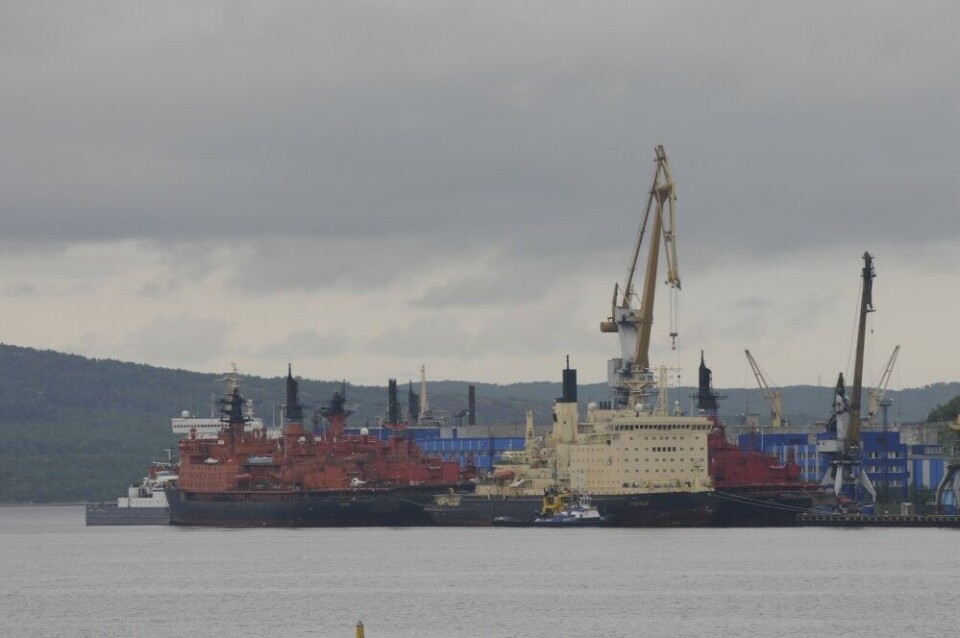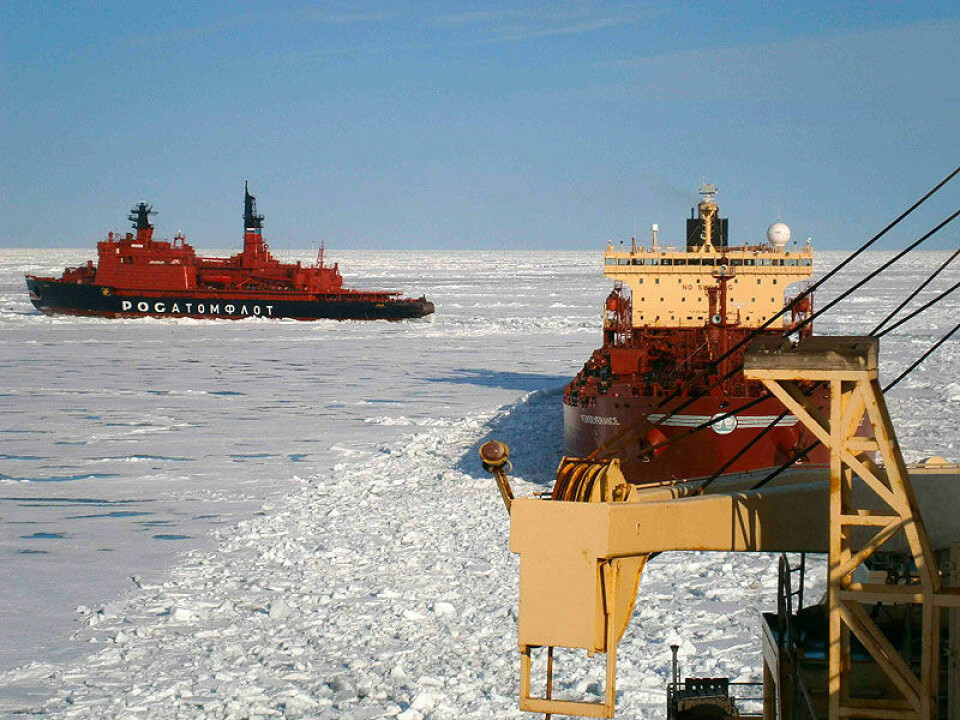
Government aims for redesign of Arctic administration
The Northern Sea Route Administration is likely to boost its role in Russian Arctic affairs. It should take on responsibility for regional infrastructure development and the management of nuclear icebreakers, government says.
p.p1 {margin: 0.0px 0.0px 5.0px 0.0px; text-align: justify; line-height: 14.0px; font: 12.0px Tahoma; color: #414141; -webkit-text-stroke: #414141; background-color: #ffffff}p.p2 {margin: 0.0px 0.0px 10.6px 0.0px; line-height: 20.0px; font: 17.0px Georgia; color: #292929; -webkit-text-stroke: #292929; background-color: #ffffff}p.p3 {margin: 0.0px 0.0px 5.0px 0.0px; text-align: justify; line-height: 14.0px; font: 12.0px Tahoma; color: #414141; -webkit-text-stroke: #414141; background-color: #ffffff; min-height: 14.0px}span.s1 {font-kerning: none}span.s2 {font-kerning: none; color: #a80e0f; -webkit-text-stroke: 0px #a80e0f}
The Ministry of Transport proposes to transfer the management of the nuclear-powered icebreakers from state nuclear power company Rosatom to the Northern Sea Route Administration. The proposal is supported by Prime Minister Dmitry Medvedev and his Deputy Dmitry Rogozin, Kommersant reports.
Ministry representative Vitaly Klyuyev confirms to the newspaper that the Northern Sea Route Administration should become a so-called integrated logistical operator in the Arctic. That includes responsibility for regional hydrography, emergency, rescue and preparedness, as well as the management of nuclear-powered icebreakers.

The proposal comes after President Putin in the recent Arctic Forum in Arkhangelsk made clear that he had commissioned his government to create «a separate structure responsible for the complex development of the Northern Sea Route and its adjacent territories, including infrastructure, hydrography, security, management and all other needed services».
In his speech at the forum, Putin underlined that «the change in ice conditions and appearance of new, modern vessels makes this [sea route] a year-round artery […] with huge potential for Russian and global economy».
That was followed up in government meeting on Arctic infrastructure development in Murmansk in April.
The transfer of powers to the Northern Sea Route Administration will help increase efficiency and save money, the Transport Ministry argues. The proposal includes transfer of responsibilities not only from Rosatom, but also from port development company Rosmorport, the State Marine Rescue Service (Gosmorspassluzhba) and the Russian Sea-River Fleet (Rosmorrechflot).
Currently, the Moscow-based Northern Sea Route Administration primarily deals with traffic regulations in Russian Arctic waters, including the issuing of sailing permissions.
If Rosatom loses its control of the nuclear icebreaker fleet it will be a blow to the company’s activities in the Arctic. Over the last years, Rosatom has significantly expanded its engagement in the region. Several major contracts have been signed with industrial stakeholders, including Norilsk Nickel and Novatek.
Rosatom has also been leading the development program on building of new nuclear-powered icebreakers. Three powerful LK-60 vessels are currently under construction at the Baltic Yard in St. Petersburg. The first of the ships, the «Arktika» was put on the water in June 2016. Construction of the two other vessels, the «Ural» and the «Sibir», was launched in May 2015 and July 2016. The yard’s construction contract with Rosatom amounts to 123 billion rubles
Rosatom has since 2008 managed the nuclear icebreaker fleet. The vessels, a total of four icebreakers and one container ship, are all based in Atomflot, a port facility in the Kola Bay.
















